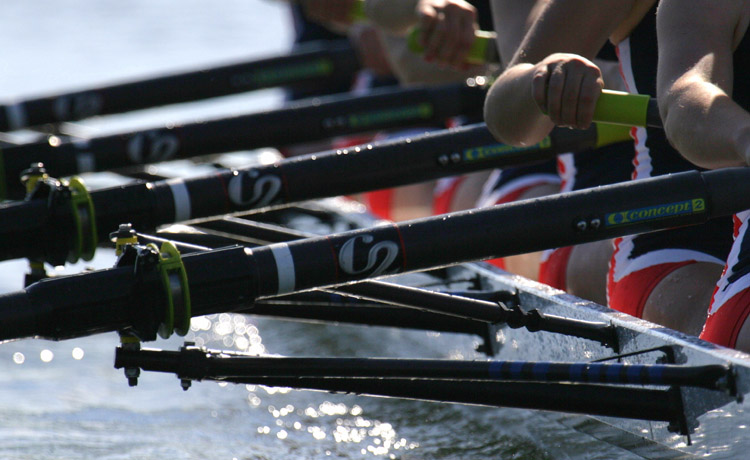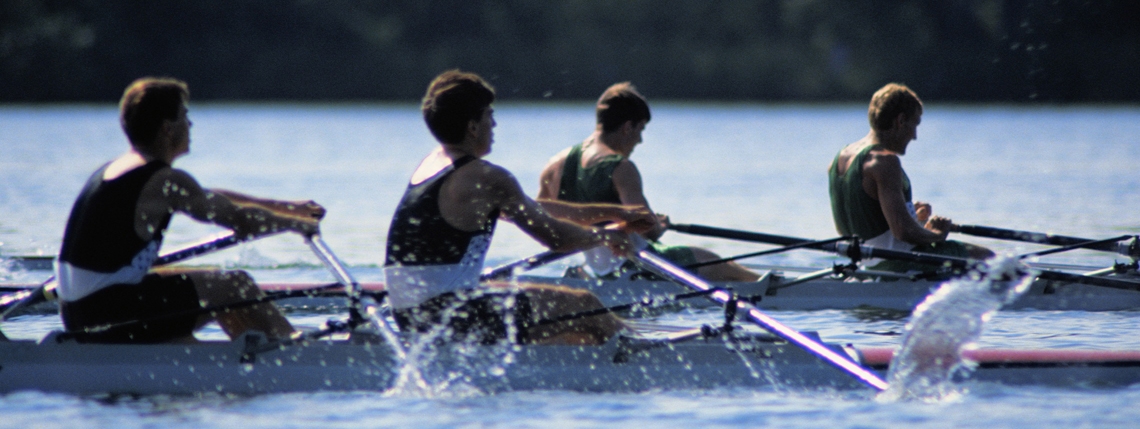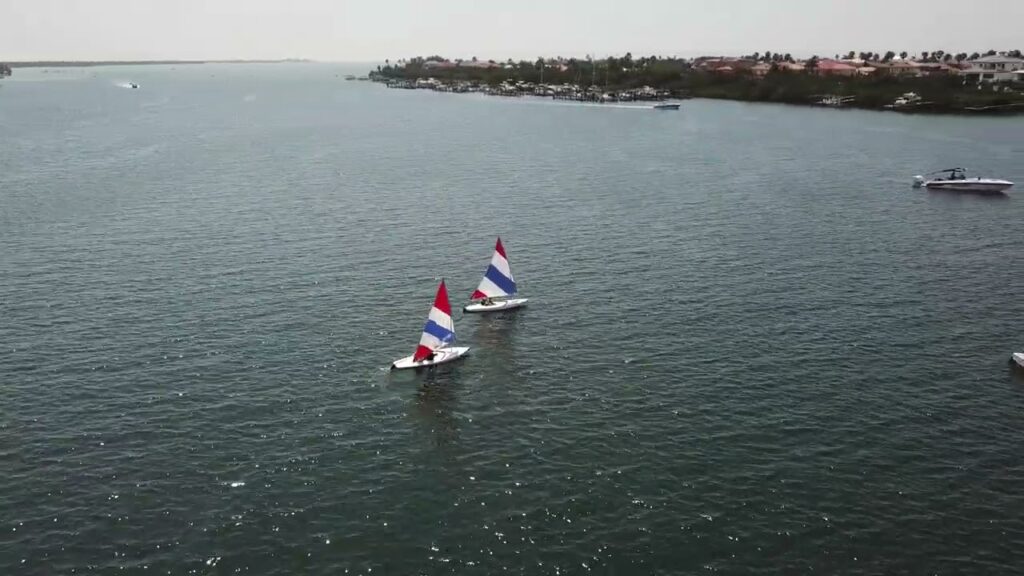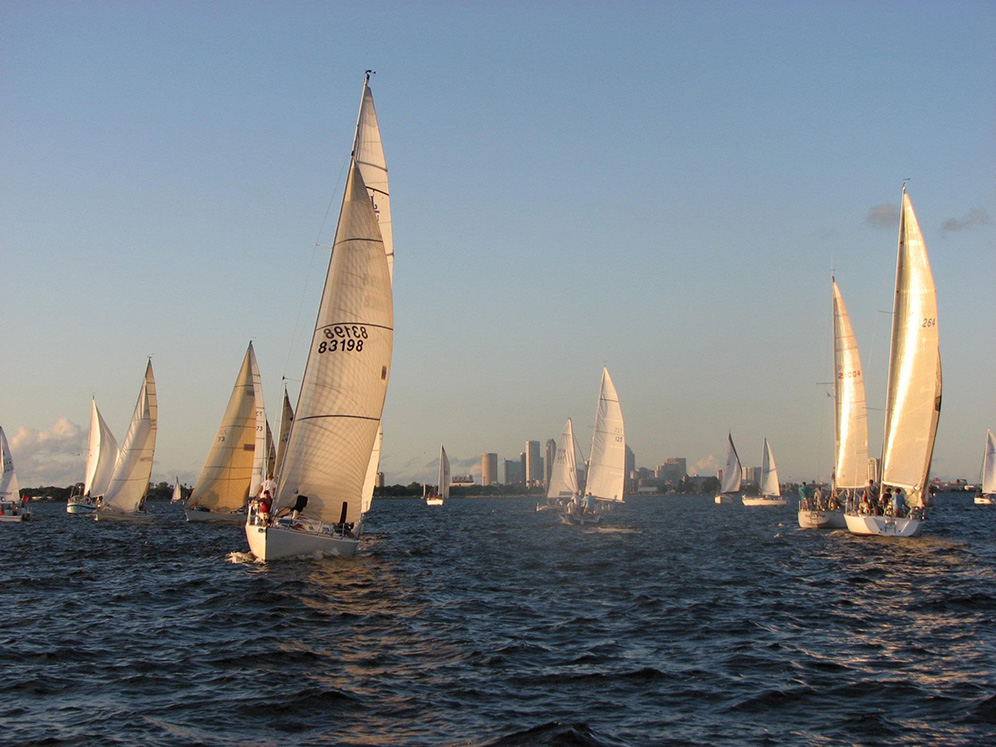Rowing is a great workout for the whole body and works especially well for building strength, endurance or weight loss. However, learning how to properly execute the rowing stroke requires some practice.
A proper rowing stroke has four parts from start to finish – the Catch, Drive, Finish and Recovery.
Catch
Rowers, aka oarsmen and oarswomen, sit backwards in the boat holding an oar handle and provide the power to move the shell through the water. The rowing stroke is a four-part movement that uses the entire body with controlled tapers of power throughout the full stroke. Having the right grip is key to this sport. It is a good idea for your athlete to practice the proper grip in order to avoid injury and maximize power transfer from foot to hand.
The catch is the first portion of the stroke from the moment the oar blade enters the water until it exits the water at the finish. The catch is when the rower’s legs are down, the back is 10-15 degrees laid back and the arms are in. This is the point where the power is being generated and where the oar is in the “sweet spot.”
After the catch, the rower should feather, or turn their oar handle so that the blade is parallel to the water. This is also known as the “squared and buried” position. After the squared and buried, the rower moves to the drive portion of the stroke.
Drive
Rowing is a great full-body cardio workout that can be used to build power and endurance. It can also be used to target different muscle groups and if you know what you’re doing, it can be a great strength training exercise.
A rower’s drive is the portion of the stroke that propels the boat forward. It is a leg driven movement that utilizes the rower’s potential power to accelerate the boat the greatest distance per stroke. A well connected and sequenced drive with a relaxed grip and blade control will maximize the power of each stroke.
The most important thing for rowers to remember is to keep their body in a balanced position through the drive. They should not reach back too far, or they will lose the power of their legs at the end of the stroke. If a rower has trouble with this they should experiment with timing between their layback and arm draw to find out when they are able to comfortably hold the body up in a balanced position without falling back over their knees.

Once the rower has completed the drive they should think of having a follow-through with their hands down through the finish. This will allow them to continue the pressure on the footplate through the recovery and will help them reposition their bodies for the next stroke.
Finish
The finish is a powerful part of the rowing stroke. It is a full-body position where the legs are straight and the core is tight. It is important to not lose focus on this portion of the stroke. Rowers who do not finish with their feet firmly pressed into the footboards and the body moving towards the stern are not delivering maximum power.
The footboards are located on either side of the boat and help with power transfer from the legs to the oar. Rowers should start the drive by pushing off the balls of their feet, and then throughout the drive they should be transferring as much power as possible to the footboards. The rower’s feet should remain firmly pressed to the footboards even through the finish and recovery.
Bow Pair The pair of sweep rowers in the bow of the boat – seats 1 and 2 in an eight or seats 1 and 3 in a four. They are referred to as the bow pair because they have the most control over the set of the boat.
Power 10 A call from the coxswain to row the next 10 strokes at a maximum effort in order to gain speed and take water on an opponent. Often used during the last stretch of a race to win a sprint finish.
Recovery
Rowing is a full-body workout that strengthens your core, back, shoulders and arms. It also improves your cardiovascular endurance and burns lots of calories. This makes it a great workout for athletes, those looking to improve their general fitness and anyone recovering from injuries or who are seeking a low-impact exercise.
In rowing, technique is important to the success of your workouts. Having good technique means that you can work efficiently, which in turn saves you energy. It also helps you prevent injury, so it’s important to take the time to practice correct technique.
The Recovery is the part of the stroke that happens before the Catch and Drive. It’s a sequenced and fluid movement, during which you move your body forward to prepare for the next stroke, while extending your legs. During this portion of the stroke, you want to be sure that your core is tight and that you are leaning back slightly. You want to be sure that your hands are comfortably held away from your body, positioned below your chest. A poor hands-away often goes hand in hand with a collapsed finish (feathering the blade out poorly) and over-pulling.



